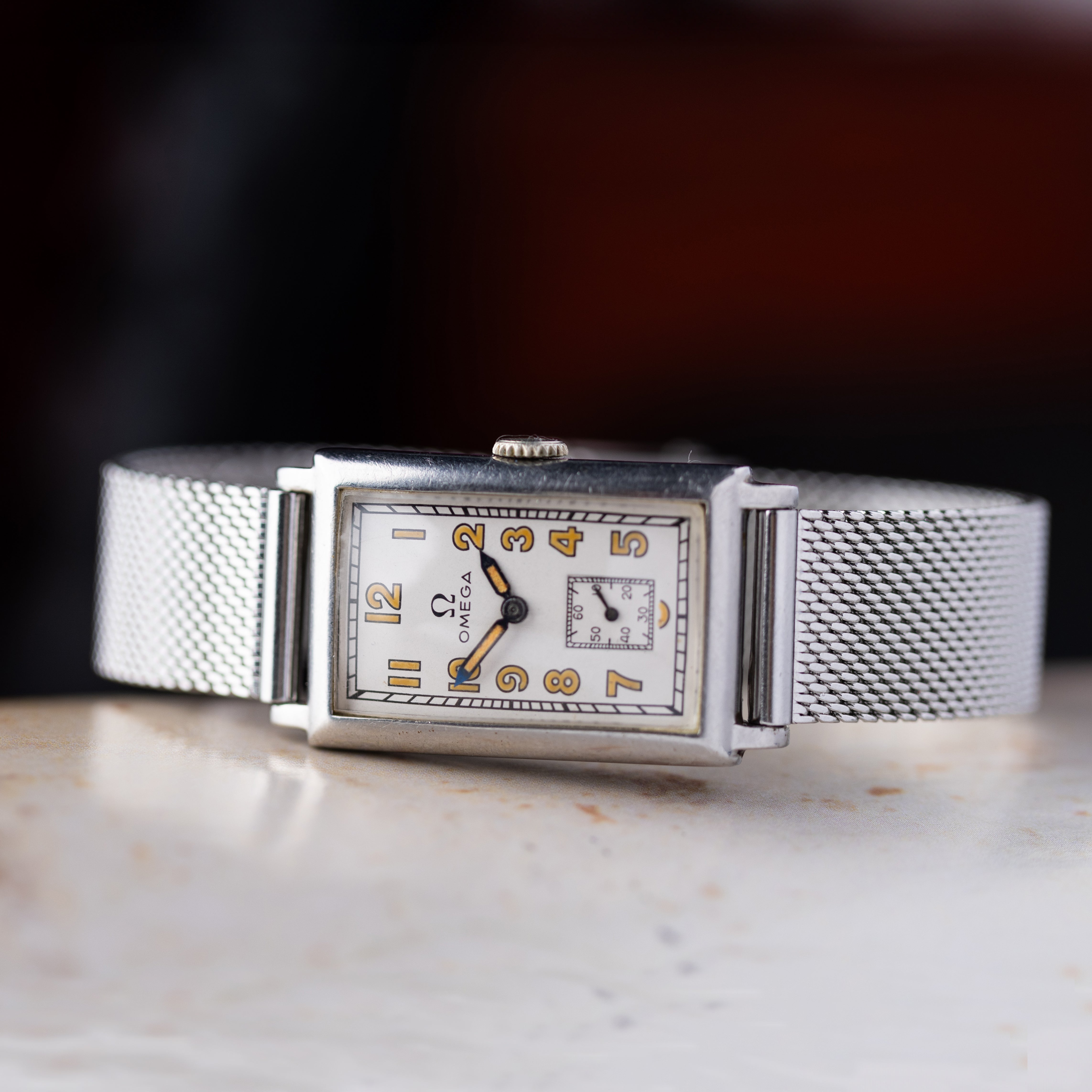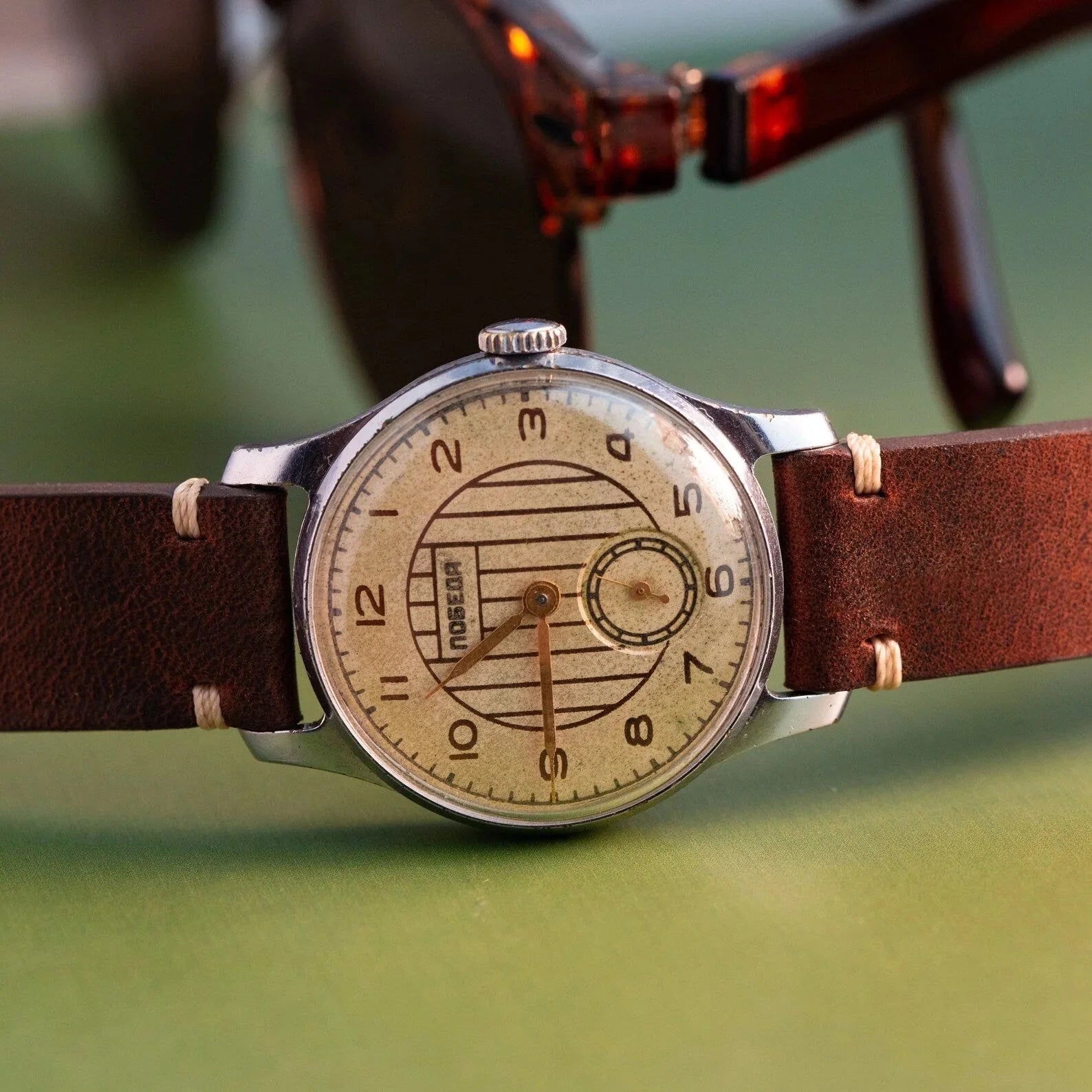The Soviet watch industry flourished throughout much of the 20th century, producing numerous iconic timepieces. Among these, the Pobeda watches stands out as a symbol of Soviet pride, resilience, and innovation. This article explores the captivating history of the Pobeda watches, from its inception to the fall of the USSR, illustrating its role in shaping the nation's identity and culture.
The Birth of the Pobeda Watches
In the early 1940s, the Soviet Union sought to achieve self-sufficiency in watch production, focusing on creating a reliable, affordable timepiece for the masses. This led to the development and launch of the Pobeda watch in 1946, which translates to "Victory" in Russian. The watch was designed to celebrate the nation's triumph in World War II, embodying a sense of national pride. The first Pobeda models featured a simple, elegant design, with a hand-wound mechanical movement and a durable steel case. These watches quickly gained popularity among Soviet citizens, as they represented a blend of quality, affordability, and patriotic sentiment. As Pobeda watches became increasingly widespread, they set the stage for a golden era of the Soviet watch industry.

The Pobeda Watch During World War II
Though Pobeda watches were introduced shortly after World War II, they played a significant role in commemorating the Soviet victory. The timepieces became a symbol of resilience and perseverance for the people. As production increased, Pobeda watches were gifted to military personnel as a token of appreciation for their service. These watches not only served a practical purpose but also boosted morale among the soldiers. The association of the Pobeda watch with the war victory contributed to its widespread appeal and post-war demand, establishing a strong foundation for the brand's growth.
The Golden Age of Pobeda
The 1950s and 1960s marked a golden age for Pobeda watches, as demand surged and the range of models expanded. The brand introduced new designs and features, such as calendar complications, waterproof cases, and even an alarm function. Technological advancements in the Pobeda watch line showcased the ingenuity of Soviet watchmakers, while maintaining affordability for the average citizen.
During this period, Pobeda also collaborated with international watchmakers and designers, exchanging ideas and technological innovations. These partnerships enhanced the brand's reputation on a global scale, as it became synonymous with quality and reliability. Pobeda watches were not only a reflection of Soviet industrial prowess, but also a significant export product, expanding the reach of the brand.
In addition to technological growth, Pobeda watches found their way into popular culture. They were featured in Soviet films and literature, further solidifying their status as a symbol of national pride. The Pobeda watch became an integral part of daily life for many Soviet citizens, setting the stage for its eventual decline as the nation's fortunes changed in the decades to come.

Pobeda Watches in Pop Culture
Pobeda watches earned a special place in Soviet pop culture during their heyday. Frequently appearing in films and literature, the timepieces became synonymous with the nation's spirit and values. Famous Soviet actors, athletes, and political figures were often seen wearing Pobeda watches, further bolstering their iconic status. The watches also played a role in fashion trends, with their distinctive designs and bold colors appealing to various tastes and styles. As a result, Pobeda watches transcended their practical function, becoming a cultural touchstone and an emblem of Soviet identity.
Decline and Fall of the Soviet Watch Industry
The 1970s and 1980s brought economic challenges and increased competition, which significantly impacted the Soviet watch industry. The advent of quartz watches and the influx of foreign brands presented new challenges, as they were often cheaper and more accurate than their mechanical counterparts. Pobeda struggled to adapt to these shifting market dynamics, leading to a decline in quality and production volume.
Additionally, the overall economic situation in the Soviet Union worsened during this period, as the country faced stagnation and resource shortages. The watch industry, including Pobeda, experienced a reduction in government support and funding. This further hindered their ability to compete with international brands and invest in new technologies.
As a result of these factors, the Soviet watch industry, including the once-iconic Pobeda brand, gradually fell into decline. By the late 1980s, the production of Pobeda watches had slowed significantly, foreshadowing the eventual collapse of the Soviet Union and the end of an era for the storied timepieces.
The End of Pobeda Watches and the Fall of the USSR
The decline of Pobeda watches mirrored the fall of the Soviet Union in the early 1990s. As the USSR disintegrated, Pobeda's production dwindled, with the brand struggling to survive in the new economic landscape. Attempts were made to revive the brand in post-Soviet countries, but the once-iconic Pobeda watches could not regain their former glory. Despite these challenges, Pobeda watches remain a symbol of the Soviet era, reflecting both the heights of its industrial achievements and the hardships that ultimately led to its demise.

The history of Pobeda watches provides a unique perspective on the Soviet Union's rise and fall. The timepieces encapsulate a nation's pride, innovation, and resilience, while also illustrating the challenges that contributed to its collapse. As a symbol of triumph and decline, the Pobeda watch serves as a fascinating artifact of Soviet history and culture. Today, these watches continue to captivate collectors and enthusiasts, reminding us of the enduring legacy of a once-great empire and the people who strove to create something remarkable amid turbulent times.








